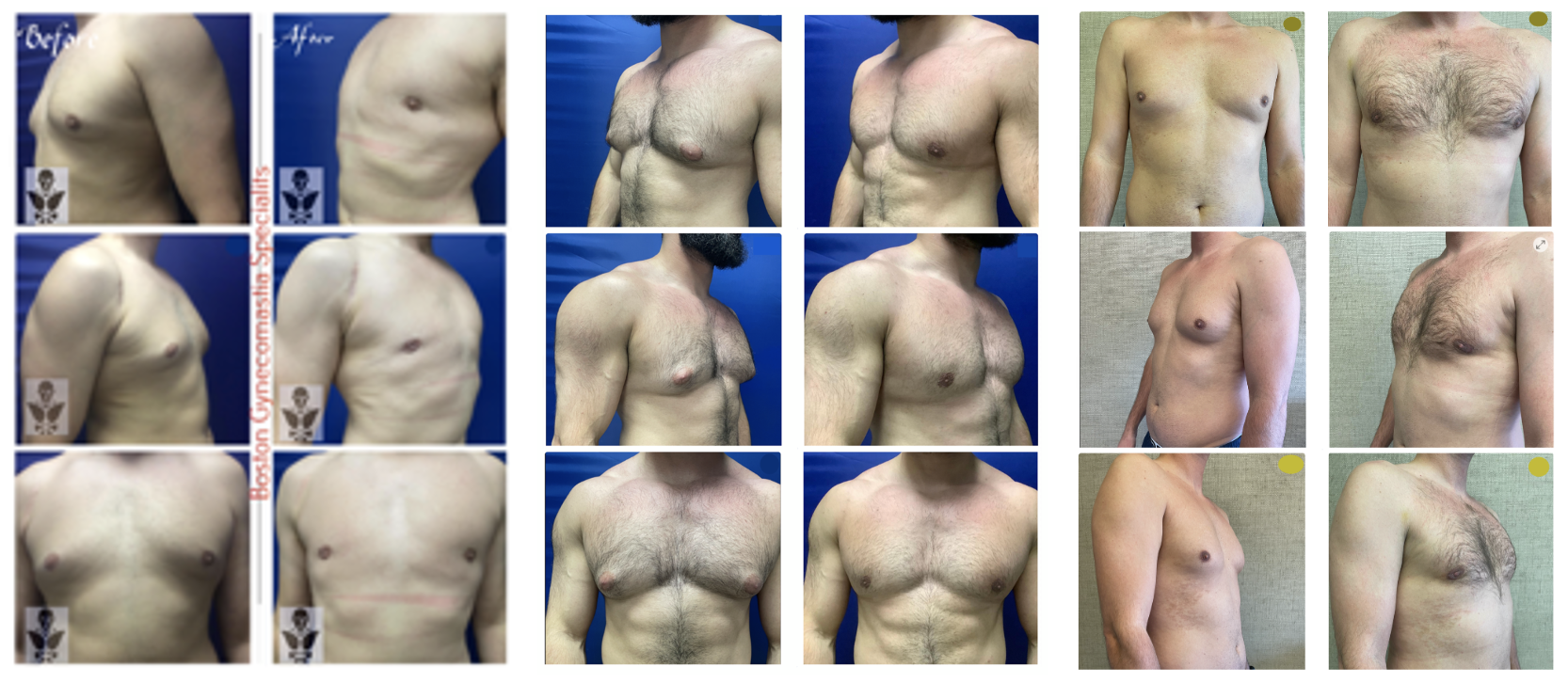Are you wondering what your chest may look like after having gynecomastia surgery at the Boston Gynecomastia Specialists?
Please reach out for our latest before and after photos of our patients who have recently had surgery with our Boston gynecomastia surgeons. This can also give you a better sense of whether you are a candidate for gyno surgery.
Before & After Gallery




























































































Feel free to learn more about the various stages of gynecomastia to understand where you fall on the spectrum, what to expect with regards to the days of surgery, post-surgical recovery and take a look at what some of our former patients have had to say about their experiences.

_____________________________________________________________
The Boston Gynecomastia Specialists is the premier Greater Boston Gynecomastia Center of Excellence. Our primary focus is on providing outstanding care throughout every step of your journey, from the first consultation to your full recovery. We recognize and appreciate the confidence you have in us and are unwavering in our commitment to maintaining the utmost level of patient care. Led by Dr. Edwin Ishoo, a highly skilled, board-certified surgeon with expertise and over 30 years’ experience in Male Breast Reduction, our dedicated team is fully committed to ensuring the best possible surgical outcomes tailored for each individual. Recognizing that every man is unique, we personalize our approach to meet your specific condition, needs and expectations. We welcome you to take that first step to achieving the transformation you have been imagining and contact the Boston Gynecomastia Specialists, the leading Gynecomastia Center in Boston, to meet with Dr. Ishoo for your personalized, in-person consultation and have your questions answered. Let us take the gynecomastia concern off your chest in a day and off your mind forever!




